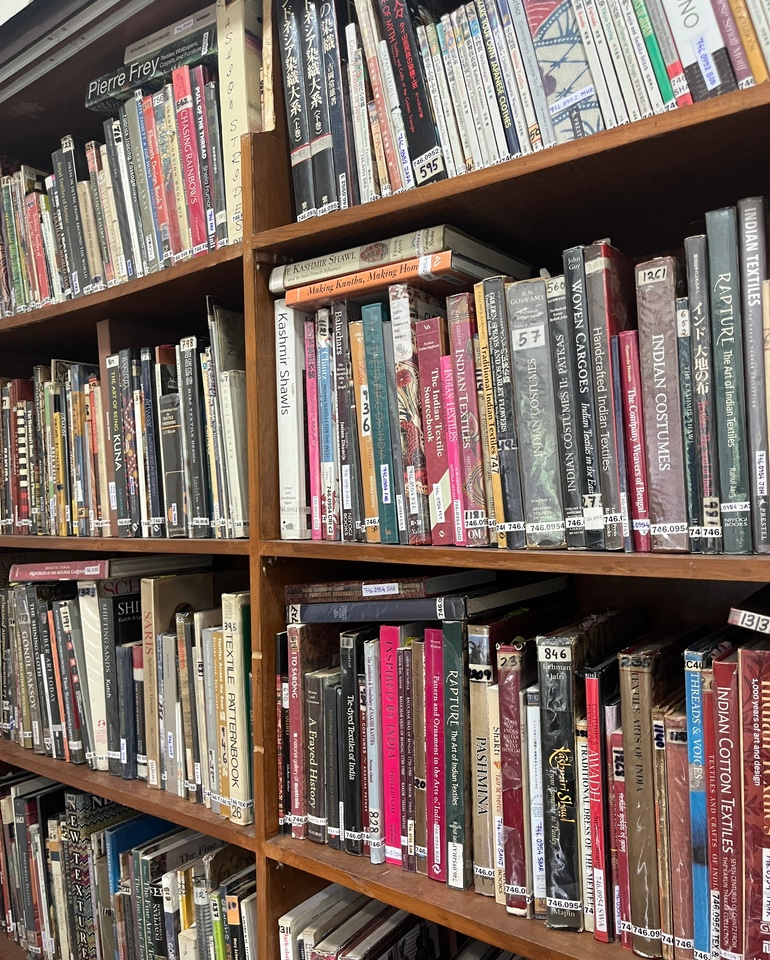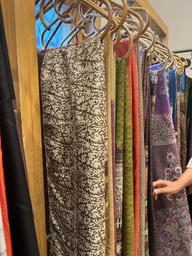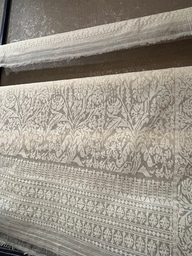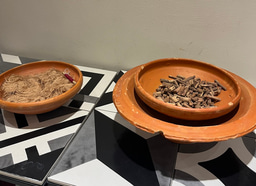LiA Week 6 and Final Reflection

On August 20, I interviewed Darshan Shah in her office in Weavers Studio, Kolkata. I also had the chance to view several books from her personal research library on textiles (with over 3,000 books!) and ask her about her upcoming book, Textiles of Bengal: A Shared Legacy which will be launched at a conference in Kolkata in January. The leading experts in textiles, including academics such as Dr. Sonia Ashmore, entrepreneurs and designers, will be at the conference. I was mesmerized by the vast array of handloom sarees that Shah seamlessly explained, feeling the fine cotton counts or the soft silk embroidered threads as I perused the current selection. It was a privilege to meet with Darshan Shah.
Final Reflection
My Leadership in Action project this summer influenced my perspective on luxury, heritage, and sustainability in textiles. Observing the rich history of Jamdani and muslin across Bangladesh and West Bengal, I value what I learned this summer about how the two regions separated by a border indeed share a deep, intertwined legacy of artistry and craft. The luxury of a fine cotton weave, such as high-thread-count muslin, transcends the mere simple fabric when we think of cotton; it symbolizes status, skill, and a shared cultural memory.
This experience broadened my understanding of what makes fabric luxurious and how “India” as a concept is deeply entangled in perceptions of luxury and identity. These insights are invaluable for my Barnard College Art History Thesis topic on Indian designer Sabyasachi Mukherjee. Seeing the preservation of traditional Jamdani motifs, especially in Sayeeda Khan’s book Old Jamdani Design, which I learned about from the writer herself over the summer, and the reverence for traditional weaves relates to how artisans and modern designers like Sabyasachi or Ritu Kumar's work to preserve history while adapting to modern markets. Sabyasachi’s use of heritage textiles in global luxury aligns with my reflections on how identity, craft, and nostalgia for a bygone era enhance value, allure, and a sense of luxury.
Through this project, I saw the power of textiles to carry cultural weight and reflected on the meaning and origins of luxury. Going forward, I hope to bring this perspective to my thesis, examining how these elements in Sabyasachi’s designs create a sense of nostalgia and exclusivity in the luxury market.





Please sign in
If you are a registered user on Laidlaw Scholars Network, please sign in